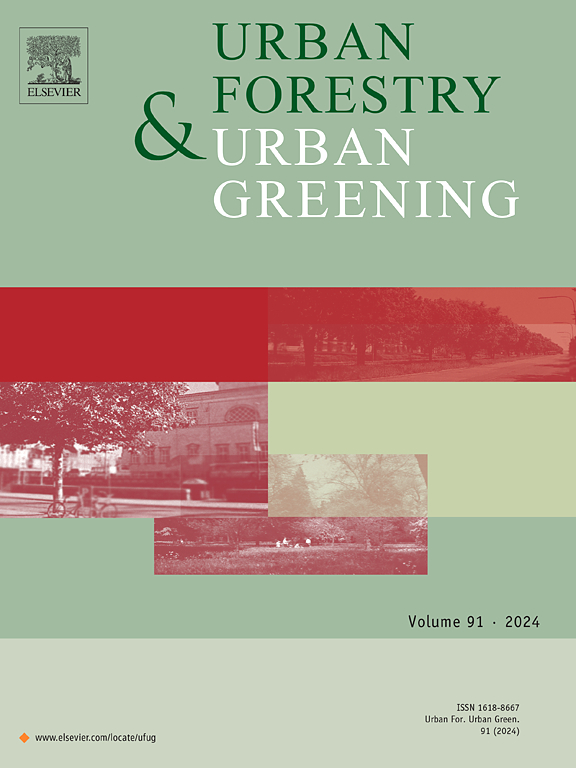Providing sufficient water for urban trees with limited root space during drought: Modeling of irrigation scenarios in a temperate climate
IF 6
2区 环境科学与生态学
Q1 ENVIRONMENTAL STUDIES
引用次数: 0
Abstract
In dense urban areas, trees are often planted in small root spaces. This results in an insufficient water supply in droughts, affecting the trees' vitality and evapotranspiration performance. However, water availability can be improved by irrigation. The study investigated whether weekly manual or daily irrigation through a rainwater harvesting system (RHS) fed by connected impermeable surfaces is sufficient to avoid drought stress. Using a 12 m³ root volume of the German minimum planting standard, we implemented a daily urban tree water balance model in a moderate climate, considering the future and current climate. We analyzed the site conditions for a 60-year-old tree in five cities in southern Germany. The results showed that weekly irrigation, as carried out in practice, does not prevent drought stress or significantly reduce drought duration compared to a tree without irrigation in all investigated locations. However, the application of daily irrigation with stormwater from an RHS reduces the duration of droughts, as shown for the species Platanus x acerifolia, which has a comparably high water demand. We optimized the required RHS storage volume depending on the tree species and location, as climate significantly influences water demand and supply. According to our results, future climate conditions must be considered in planning, as larger RHS storage volumes may be required.
求助全文
约1分钟内获得全文
求助全文
来源期刊

Urban Forestry & Urban Greening
FORESTRY-
CiteScore
11.70
自引率
12.50%
发文量
289
审稿时长
70 days
期刊介绍:
Urban Forestry and Urban Greening is a refereed, international journal aimed at presenting high-quality research with urban and peri-urban woody and non-woody vegetation and its use, planning, design, establishment and management as its main topics. Urban Forestry and Urban Greening concentrates on all tree-dominated (as joint together in the urban forest) as well as other green resources in and around urban areas, such as woodlands, public and private urban parks and gardens, urban nature areas, street tree and square plantations, botanical gardens and cemeteries.
The journal welcomes basic and applied research papers, as well as review papers and short communications. Contributions should focus on one or more of the following aspects:
-Form and functions of urban forests and other vegetation, including aspects of urban ecology.
-Policy-making, planning and design related to urban forests and other vegetation.
-Selection and establishment of tree resources and other vegetation for urban environments.
-Management of urban forests and other vegetation.
Original contributions of a high academic standard are invited from a wide range of disciplines and fields, including forestry, biology, horticulture, arboriculture, landscape ecology, pathology, soil science, hydrology, landscape architecture, landscape planning, urban planning and design, economics, sociology, environmental psychology, public health, and education.
 求助内容:
求助内容: 应助结果提醒方式:
应助结果提醒方式:


